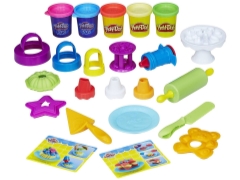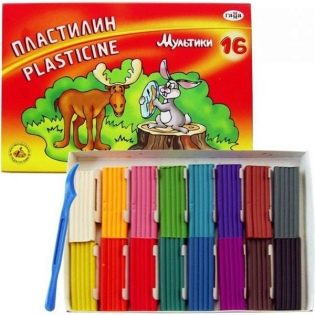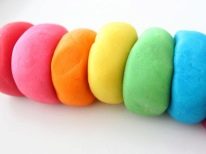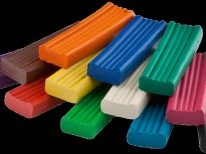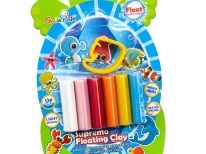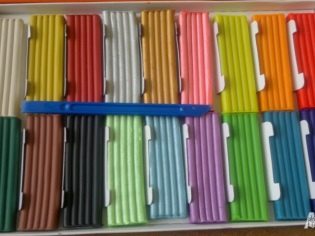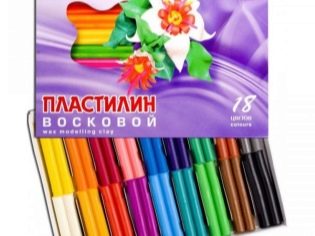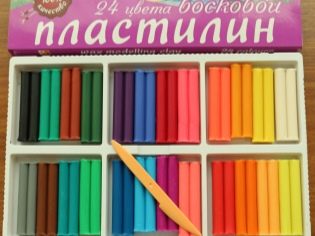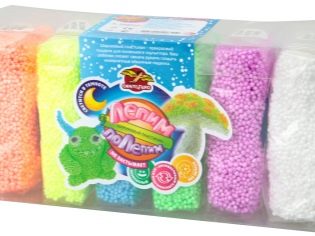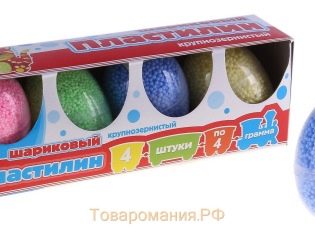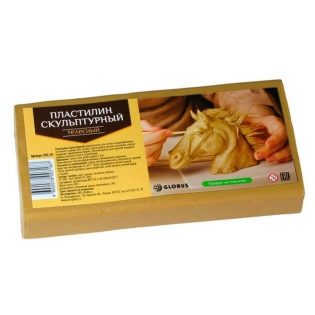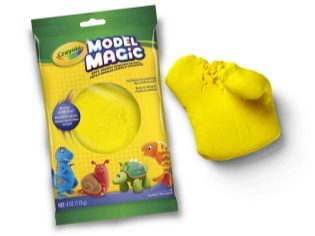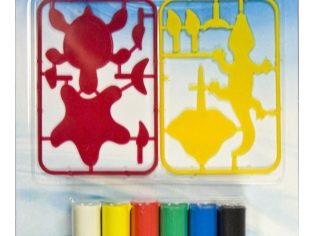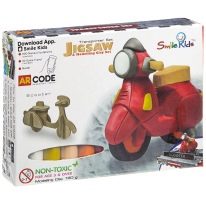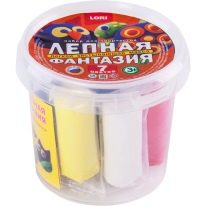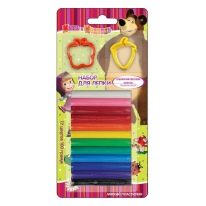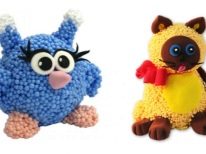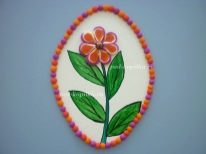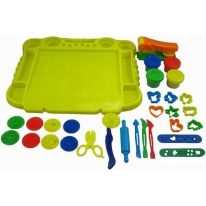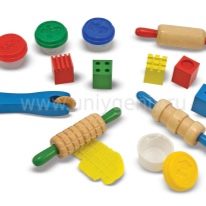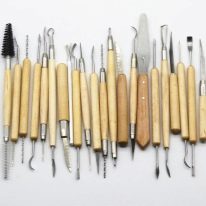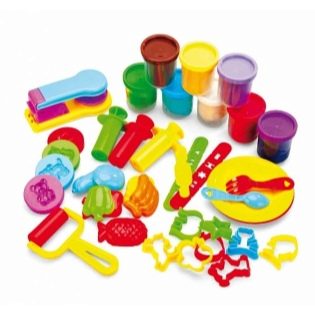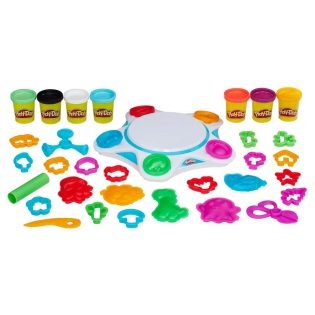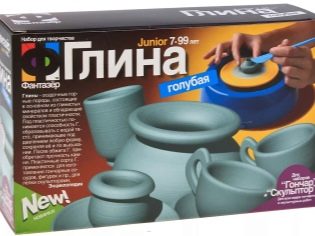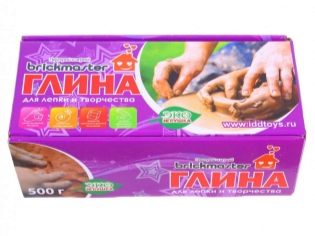Kits for modeling clay
The little one learns quickly, no matter what you choose to teach him. Plasticine is one of the means for the development of various abilities of a baby. The modeling of plasticine develops fine motor skills of hands, contributes to the development of imagination, intelligence. This lesson will allow the child to realize their fantasies in a variety of handicrafts, to make a gift to parents, giving one of them.
Plasticine requirements for children
For comfortable work of the child, it is necessary that the clay corresponded to several parameters, otherwise the occupation will bring only disappointment.
Plasticine should be, first of all, soft. Hard mass baby will not be able to crumple and give it any form. As a result, he will be upset and, perhaps, will never again want to engage in modeling.
Good quality clay should not leave marks on clothes, hands, or furniture.. If this moment is not observed, the child, of course, it does not interfere in the work, but you have more worries.
When sculpting individual pieces should be well bonded, not separated from each other. Good plasticine does not exfoliate while working with it.
The material must be plastic. The baby should not have difficulties with this during the creative process.
Kinds of plasticine
Today, the choice of clay is quite large. You can select based on age and specific goals.
- Normal plasticine. It consists of crushed clay powder, animal fats, waxes and substances that prevent drying, loss of softness and plasticity. In the set of such clay there are bars of different bright colors, but the more the clay material is, the duller the shades will be.
- Wax. Great for little baby hands. It is very soft, plastic, malleable. The pieces are securely fastened without disappointing the baby. The colors are varied, and with foreign manufacturers more saturated colors.
- Ballpoint. It consists of small balls, fastened together by an adhesive substance, which makes it possible to easily connect the individual elements of crafts, but it does not stick to the hands. The structure of this clay allows you to hide minor flaws in children's crafts. Ball clay gives a huge scope for creativity. It is convenient and pleasant to work with him. It is available in plastic containers, can be of various colors: classic, fluorescent, with sparkles. Balls in the composition may be smaller or larger. Ready-made crafts dry up in a few hours, and they can be put on the shelf or presented to someone from relatives.
- Sculptural. This clay is used in the classroom in art schools. It is well suited for training. It differs from the usual greater plasticity, you can use several times. It has poor color gamut, but the finished product can be easily dyed.
- Hardening. Plastic, easy to operate. The color palette is varied, bright shades. It cannot be used several times, because the finished figure hardens within 24 hours and does not lose its shape for a year or even more. Great for kids who want to please their loved ones with crafts as gifts.
- Floating. This clay, in contrast to the previous one, does not dry out, wrinkles well, does not stick to hands. Its peculiarity is that its products are kept on the water. The child can play in the bathroom with his own toys.
However, it is recommended to make figures with a flat and wide base so that they stay on the water.
How to choose?
For beginners, "masters" is better to buy soft, malleable clay, which will be easy to crush. Since little children often put everything in their mouths, it is desirable that the substances be natural, including dyes. Try not to save on quality and do not trust unknown manufacturers who may use toxic substances in their composition. But popular brands will not spoil their reputation by abusing it.
Also, the price of clay will depend on whether it leaves traces behind. If you do not want to scour it from the carpet, curtains, clothes, better not stingy.
For training, training in sculpting is also convenient sculptural clay. In addition to the process of modeling, fine motor skills can develop and dyeing the finished figures in different colors. In addition, it is reusable.
Ball clay is very bright, interesting, attractive and easy to handle. From it will turn out wonderful memorable gifts. To train on it will not work, so this clay is better to acquire for a more or less agile child in the modeling.
Required Tools
Set for modeling clay contains several required items:
- Board. To work with clay, it is better to use a special board than the surface of the table. This will protect the table from possible contamination and will contribute to giving the individual details of the figurine the desired shape. For example, a flat smooth surface.
- Stacks. This is a special knife made of wood or plastic. They can cut off the necessary amount of material from the stone, make cuts, press it. Alternatively, you can use a regular disposable plastic knife with a serrated side. This tool can not be afraid to spoil the surface of the board or get hurt.
- Small rolling pin. She can roll out the clay as dough if necessary. It can be plastic or wooden. Sold in sets for modeling, as well as in culinary children's sets. Any other device of the same small size will do.
- Shapeless. The subject is not obligatory, but it can be great to help the guys who make plasticine, for example, a picture. Ready molds can make the necessary figures and put them on the "canvas".
- Matches or toothpicks. They may be needed to fasten individual parts. Toothpicks can also be used to sharpen small fragments, when you need, for example, to draw eyes, a smile, streaks on leaflets and other trifles.
- Decorative items. As them you can use different beads, beads, cardboard, twigs, wire, matchboxes, rowan berries, foil.
- Napkins. During work, it is necessary to periodically wipe the stacks and the board, as well as at the end of the process. It can be paper napkins or cloth. For these purposes, take the old unwanted clothes.
Alternative to plasticine
In addition to plasticine in modeling you can also use clay, modeling mass, dough. Tools will need all the same.
Clay is less plastic than plasticine, in the process of using it stains your hands. The dough is softer than plasticine, suitable for the smallest. Ready-made figures dry out, harden. They can be painted.
The modeling mass is very easy to handle, pleasant to the touch, soft. According to its plastic properties, it resembles chewing gum, but does not stick to hands and clothes; material is not cheap.
The following videos present master classes in sculpting various figures. Watch and sculpt with pleasure!
